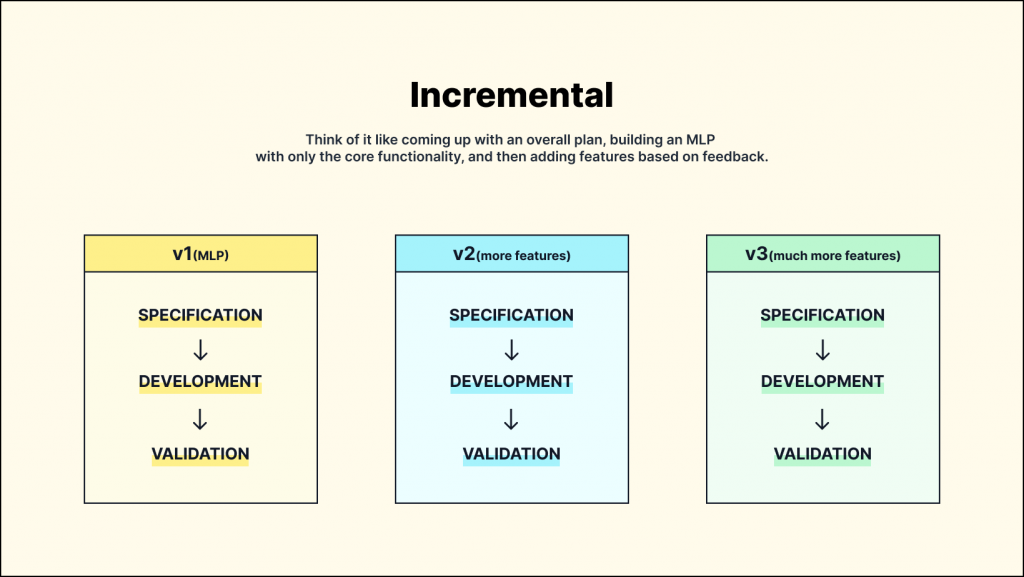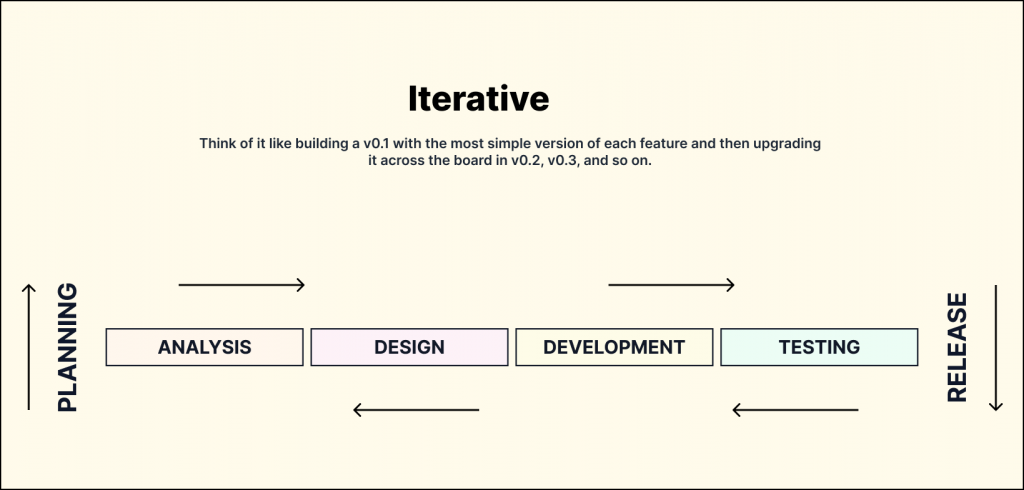In the software development processes, agile methodology has become increasingly popular. It is an umbrella term for a range of approaches and practices based on the values of The Manifesto for Agile Software Development (https://agilemanifesto.org/principles.html). One of the effective methods of software development within Agile is the Dynamic Systems Development Method (DSDM), which applies the principles of iterative and incremental approaches. In the present article, we will analyze these two approaches: what they are and how effective they are in the software development processes.
Despite the fact that agile methods seem very modern and trendy, they have quite a long history. For the first time, the ideas of Iterative and Incremental Development (IID) were put forward back in 1939 by Walter Shewhart in his work Statistical Method from the Viewpoint of Quality Control. He developed a system of short cycles for quality improvement. American engineers have been actively using iterative and incremental development methods since the mid-1950s during their work on large projects.
To understand more about the iterative and incremental approaches to software development, these concepts need to be clearly defined.
The incremental approach assumes that there are many ways to structure or define a problem, but does not offer a formal method for covering the whole range; the focus is on the parts of the system and it is understood that only minor modifications to the functions, flow, or structure of the system will be required. In other words, when applying an incremental approach, developers can make a complex product design but omit minor details that do not require immediate development and do not critically affect the quality of the final product. Basically, we spoke here about the Minimum Lovable Product. In this case, the product development process is divided into several stages, which can be carried out separately from each other. Once the development of one or more product modules is completed, they are integrated into the final product.

The iterative approach assumes that development work is carried out in parallel with the continuous analysis of the results obtained and the adjustment of subsequent stages of work. In other words, with an iterative approach, developers start from an idea or concept of the final product, and then develop the product sequentially, step by step, achieving the set final product objectives.
Product development with an iterative approach begins with the minimum required parameters of the final product. Then feedback from the stakeholders is collected based on the results of the work. If the feedback is positive, and the development team understands that the product is moving in the right direction, the development process moves to the next stage, where the software product receives additional necessary functions, and feedback is again collected based on the results of the work.
The product goes through these cycles until the final product has all the intended features and satisfies the needs of the target audience of end-users.

What are the advantages and disadvantages of the incremental approach?
One of the main advantages of the incremental approach during software development is the ability to develop in parallel workable modules of the final product. This allows different and independent development teams to be involved in order to speed up the appearance of the final product.
The incremental approach also reduces the overall risks in the development process, as it is easier to identify risks and identify possible solutions in smaller modules. The process of integrating modules into the final product significantly reduces the number of bugs during testing.
Though, an incremental approach allows working on software modules at different times, since each module is essentially a conditionally independent part of the development process that will be integrated into the final product.
Like any development method, the incremental approach has a number of disadvantages. First of all, at the initial stage, it is necessary to determine all the requirements for the final product in order to divide it into conditionally independent modules. In addition, changes can only be made after the integration of modules and analysis of the resulting product, after which it will be necessary to divide the final product into modules and refine them again. It is important to note that the integration process itself can be quite complex, and the final product cannot be tested until all its components are ready.
What are the advantages and disadvantages of an iterative approach?
One of the main benefits of the iterative approach during software development is early access to a working product. At each subsequent stage, the product is consistently improved and adapted to the necessary changes. It also allows to test the product expeditiously, including testing with real users, to make it as attractive as possible in a short time.
An iterative approach simplifies risk management during app development, as risks are identified during each iteration and can be quickly corrected.
The iterative method has one significant drawback: it requires a proactive approach, which is quite difficult to implement during the development of large projects. The disadvantages also include a rather high probability that during iterations it will be necessary to significantly rework the architecture and other functional features of the final product.
Is there a difference?
Certainly, there is quite a big difference. It consists in designating the specifications and functionality of the final development product. In the case of the incremental method, specifications and functionality must be declared and thought out in advance, while the iterative method involves the development of product specifications and functionality during the development process itself, based only on the overall vision of the final product.
How to use both approaches at the same time?
In fact, there is a 99% chance that you are already using both incremental and iterative approaches in software development simultaneously. These two approaches complement each other perfectly, allowing you to “divide and conquer” during the development process: divide product development into modules and improve them at each stage. This is why IID is so well integrated into the agile software development philosophy.
Conclusions
What is the incremental approach?
The incremental approach suggests that a complex product design is created without mentioning minor details that do not critically affect the quality of the final product. At the same time, the product development process is divided into several modules, which can be developed separately from each other and then integrated into the final product.
What is an iterative approach?
The iterative approach suggests that a general concept of the final product is created, and then the development of the product starts immediately with the minimum necessary parameters and functions. After receiving feedback on the presented product, the development proceeds to the next stage, at which the software product receives additional necessary functions, whereupon feedback is collected again based on the results of the work.
Which is better: incremental or iterative approach?
Both methods complement each other perfectly and are most often used simultaneously during software development. This is why IID is so well integrated into the agile software development philosophy and is often used by developers because of the efficiency and effectiveness of these approaches.


